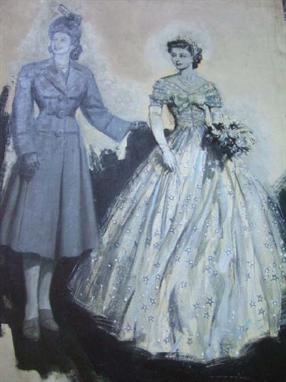We found 9817 price guide item(s) matching your search
There are 9817 lots that match your search criteria. Subscribe now to get instant access to the full price guide service.
Click here to subscribe- List
- Grid
A pair of Meissen large Ewers, Water and Air, one with seaweed moulded handle applied with winged putti and the bodies also applied with Neptune and horses, and a mermaid and a snake, and also embossed and decorated with a seascape and men-of-war, the spreading oval base also embossed with seaweed and applied with fish (restoration to mermaid and Neptune's hand, and restored snake head, tail of one fish missing, chips to three ears of horses, also Neptune repaired at waist, and body of ewer hairline cracked), the other ewer with a blue drape moulded handle and crested with a winged putto and goddess below with peacock's head and eagles and game birds etc, and the feather moulded oval base applied with a putto with a dove on one hand (leg of putto on handle repaired, further leg of putto at lower terminal handle repaired, arm of putto on base repaired), 19th Century, both 24" high
An enameled circular box, decorated with a seascape view with a bird on an island, detailed 925 S, a silver handled shoe horn, Birmingham 1907, a turned bone cylindrical container, a quantity of foreign banknotes, an Oriental matchbox stand, nutcrackers, pairs of scissors, decanter labels, nut picks, miniature tankards, a spoon, a butter knife and sundry.
A WELL-PRESENTED SAILORWORK WATERLINE MODEL OF THE THREE-MASTED BARQUE JOHN WESLEY, CIRCA 1867. with carved and painted hull, simple fittings, wood and cloth 'helmsman' and full suit of shaped and painted tin sails, mounted in a raised and painted seascape within glazed case with painted cloud backboard, model lighthouse off starboard bow and name plate. 25 x 33 1/2 x 12 1/2in. (63.5 x 85 x 32cm.). Built by Alexander Hall & Sons for the London Missionary Society in 1867, the John Wesley was originally a 238 ton composite barque but was later re-rigged as the three-masted barque depicted in this model. For over thirteen years she served the Society's many South Pacific island missions. Eventually hulked in 1899, she sank in 1903.
A LONGCASE CLOCK by Thomas Radford, Leeds, the eight day movement with anchor escapement, arched dial painted with flowers and with Roman and Arabic numerals, secondary dial, painted moonphase with landscape and seascape, in inlaid mahogany case with stringing and chequer banding, scrolled pediment with finial on fluted Corinthian columns, arched door flanked by stop fluted quarter columns, canted base and bracket feet, 97" high
















































